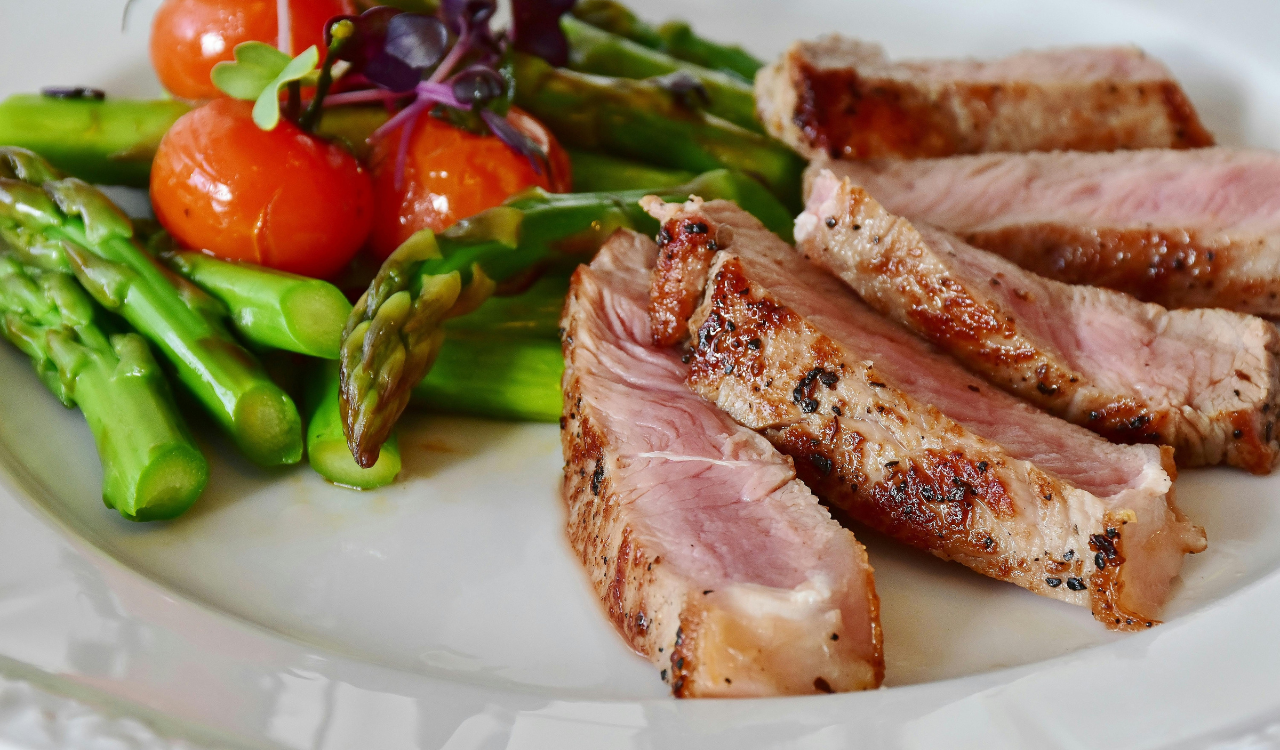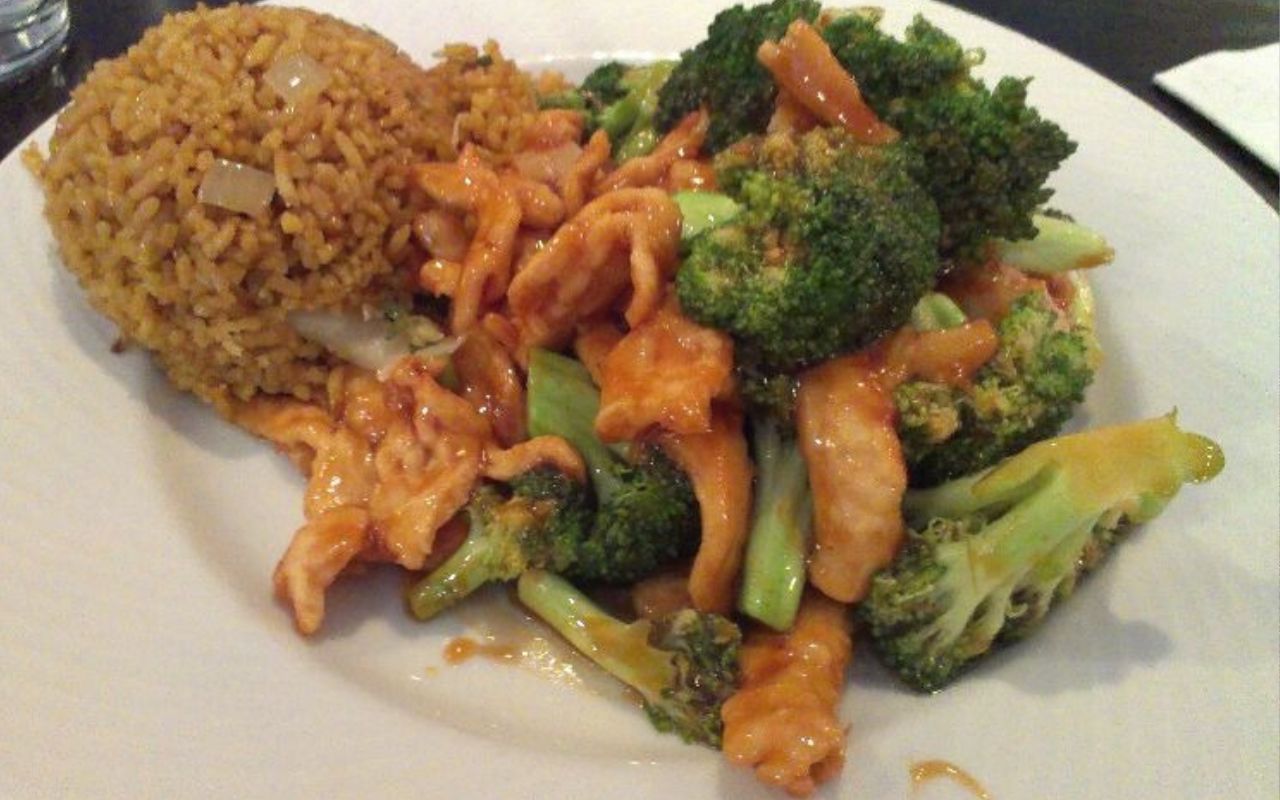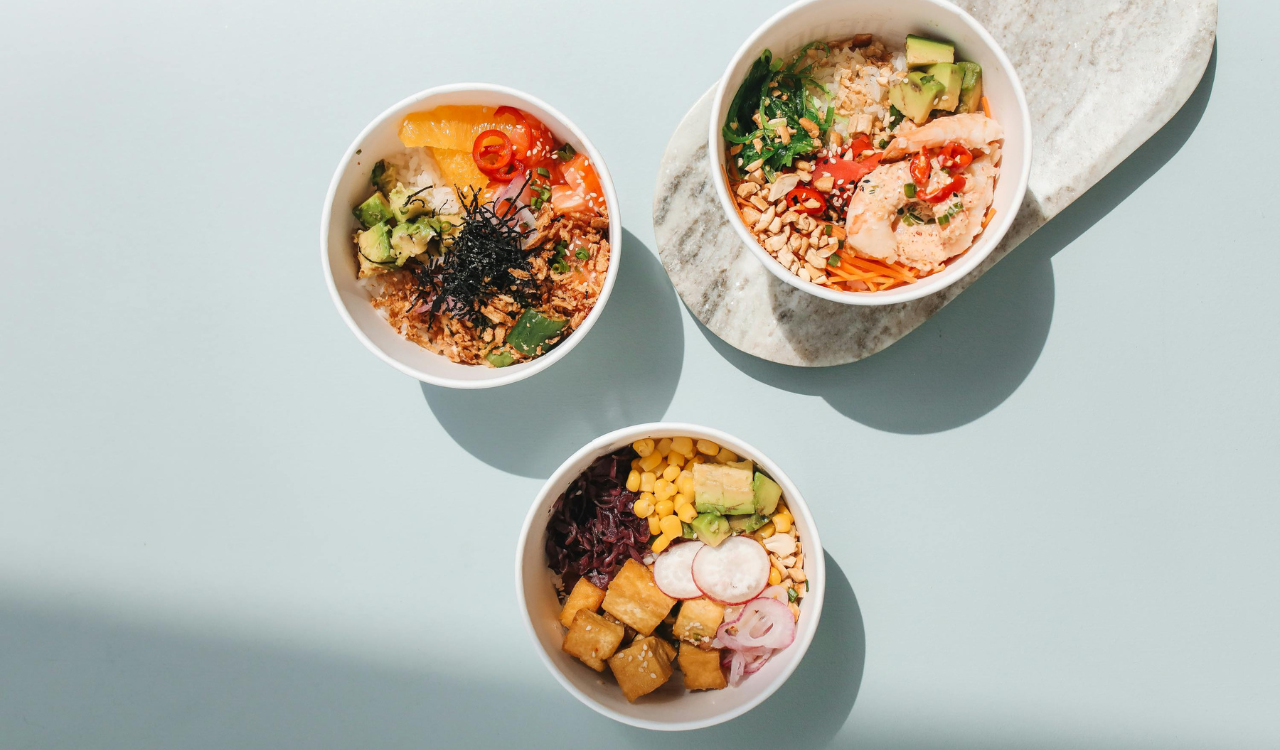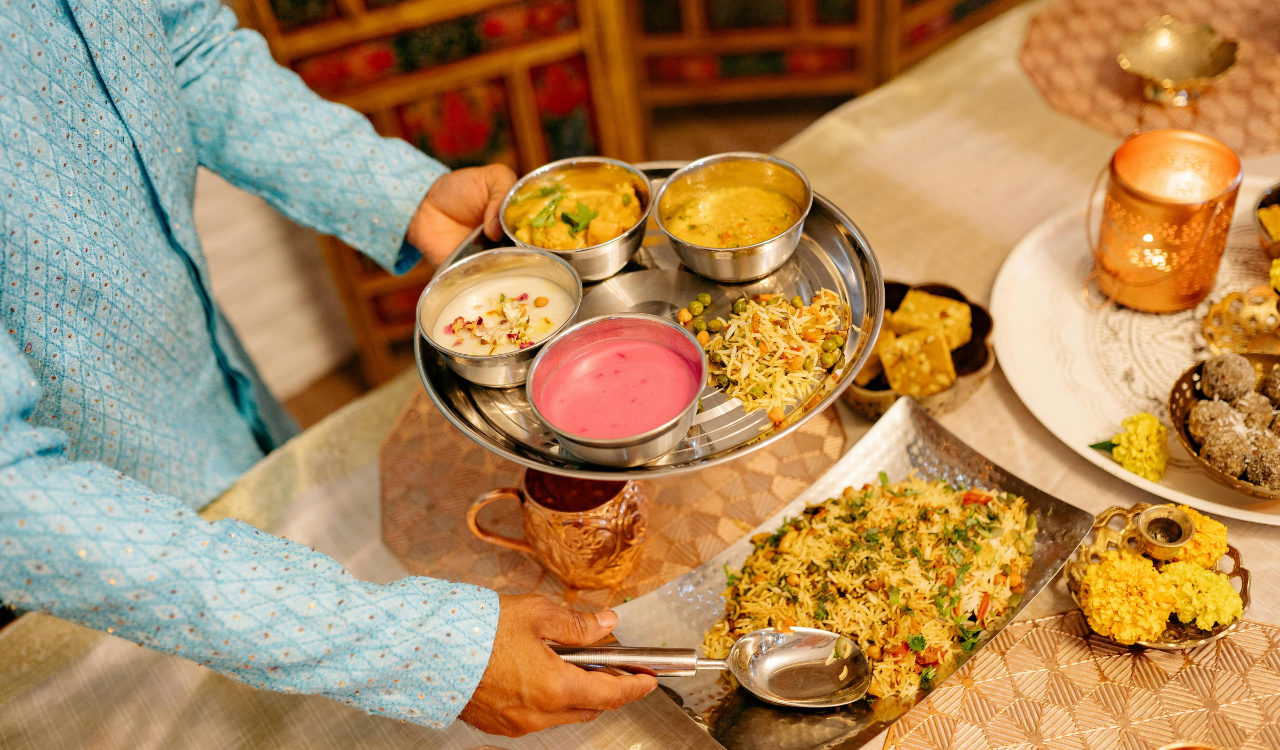13 Filipino Dishes Americans Should Try at Home
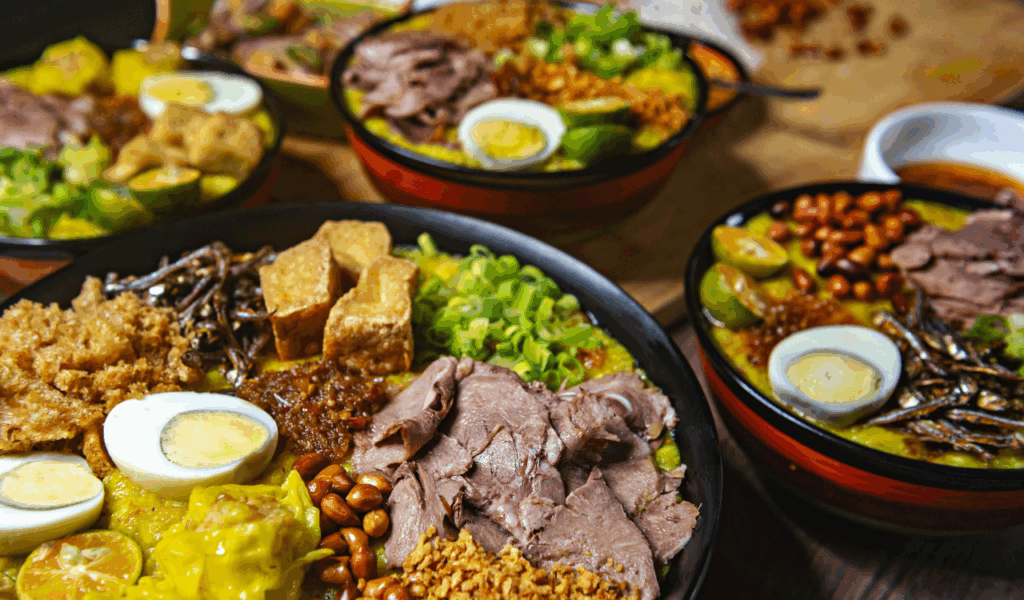
Filipino food is a stunning blend of indigenous flavors and centuries’ worth of Southeast Asian, Chinese, Spanish, and American influences. Although it has something for every palate, sweet, sour, salty, umami, crunchy, and creamy, it is still underappreciated by many Americans. These 13 recipes are not only unique; they can be made at home and are accessible with common pantry items. This post offers a variety of Filipino appetizers, main courses, soups, and desserts that will make you want to prepare, share, and eat Filipino food again.
1. Chicken Adobo
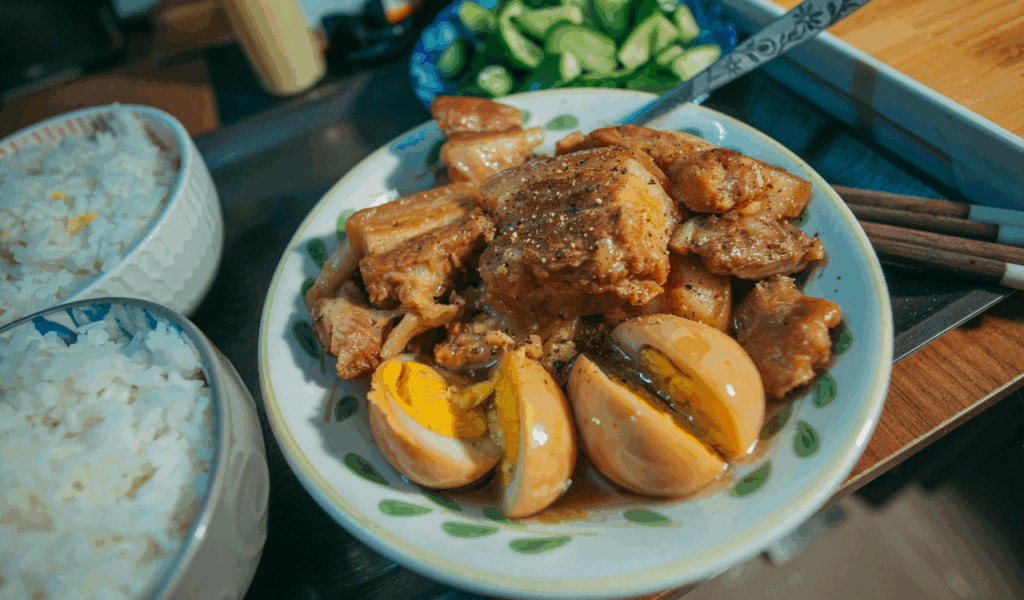
With good reason, chicken adobo is frequently referred to as the Philippines’ unofficial national dish. It consists of marinated chicken (or pork) that is cooked until it is tender and flavorful in a well-balanced mixture of vinegar, soy sauce, garlic, black peppercorns, and bay leaf. The secret is to rest and allow it to cool; flavors develop with time. Depending on your preferences, you can add sugar, chili, or coconut milk to this easy, adaptable dish. Adobo is listed as a necessary introduction in many Filipino cuisine guides.
2. Sinigang (Tamarind‑Sour Soup)
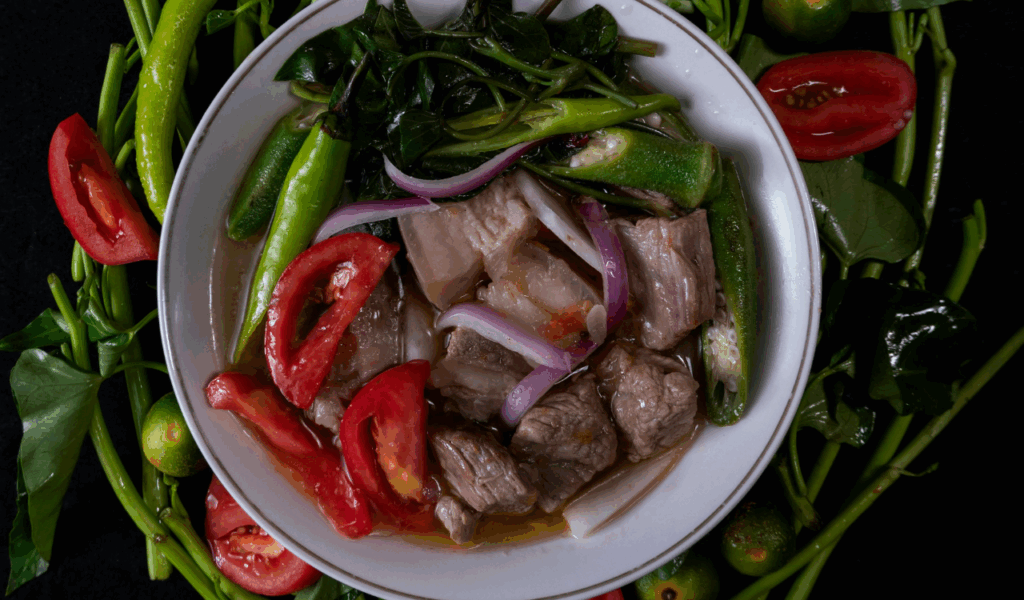
Americans frequently find the sour soup known as sinigang to be both memorable and refreshing. Usually made with pork, shrimp, fish, or beef and veggies like radish, eggplant, okra, and leafy greens, the broth is soured with tamarind, green mango, or other sour fruits. The savory, tart broth balances the richness and goes well with rice. The adjustable sourness makes it suitable for home cooks. It is easily adaptable and frequently included in Filipino “must-try” lists.
3. Pancit (Noodle Stir‑Fry)
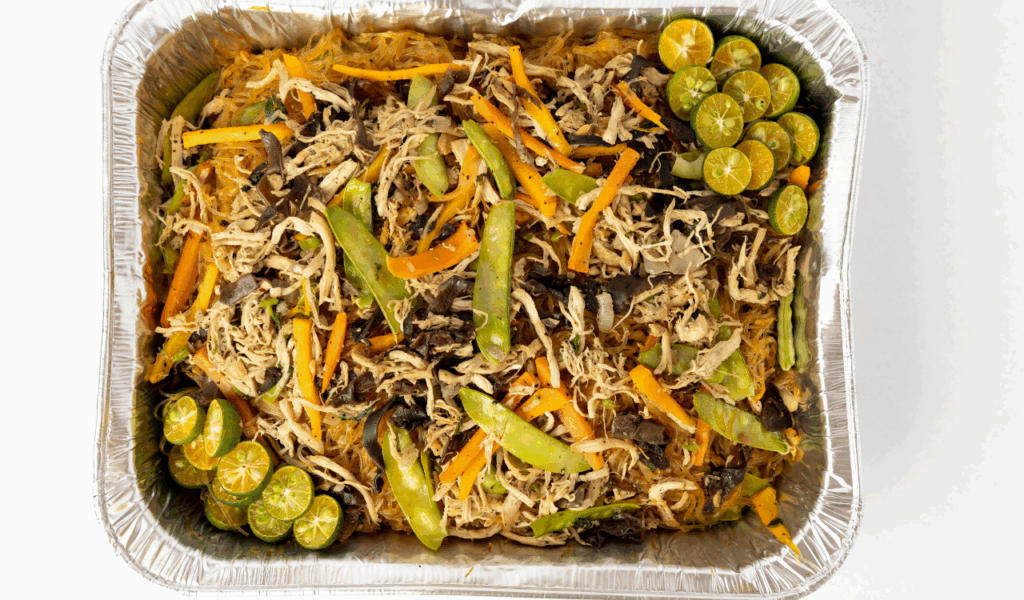
Filipino stir-fried noodles, or pancit, are a versatile and comforting dish that Americans can make. Pancit Bihon (rice noodles) and Pancit Canton (egg noodles) are popular variations. Garlic, onions, vegetables, meats, or shrimp are stir-fried with noodles, and they are lightly seasoned with fish sauce, soy sauce, and occasionally citrus. In addition to being a weeknight mainstay, pancit is served at celebrations for long life. Because of its versatility, you can substitute items from your refrigerator.
4. Lumpia (Filipino Spring Rolls)
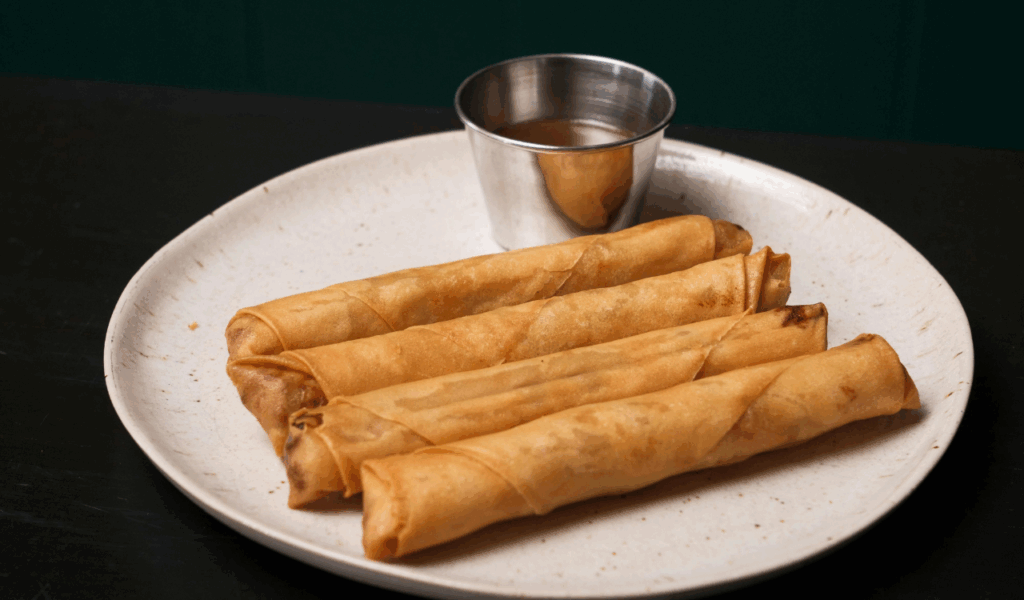
Often referred to as Lumpiang Shanghai, lumpia are Filipino-style spring rolls that are filled with seasoned pork, shrimp, or vegetables and deep-fried until crisp and golden. They are ideal as finger foods or appetizers. For a vegetarian option, there is also Lumpiang Gulay. To ensure crispiness, roll tightly with minimal air and cook in hot oil. Lumpia is a popular Filipino export dish that many food writers recommend trying.
5. Kare‑Kare (Peanut Stew)
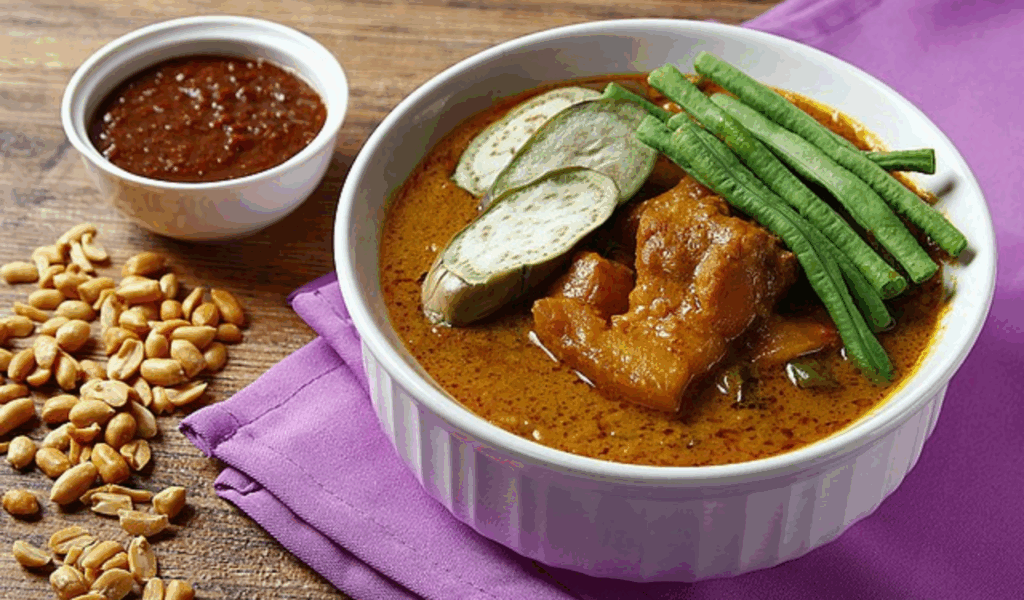
Kare-Kare is a hearty stew made with peanuts and usually made with vegetables, tripe, or oxtail. It is served with bagoong (fermented shrimp paste) to enhance umami and a savory peanut sauce thickened with peanut butter or ground peanuts. The combination is robust, incredibly reassuring, and distinctive. In Filipino cuisine, it is regarded as one of the more festive, special-occasion dishes.
6. Lechon Kawali / Crisp Fried Pork Belly
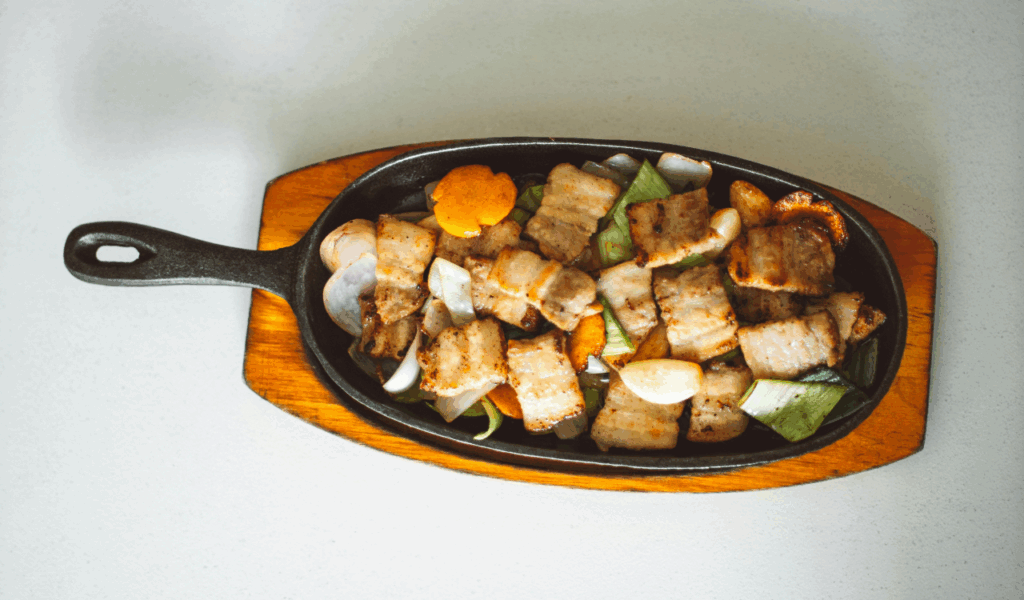
Lechon kawali is pork belly that has been boiled, drained, and then deep-fried until it crackles and has crispy skin on the outside and tender meat inside. It’s a well-liked illustration of how to blend richness and texture. Serve it with liver sauce, soy sauce, or spicy vinegar for dipping. Lechon or lechon kawali are listed as must-try Filipino dishes in many food overviews.
7. Bistek Tagalog (Filipino Beef Steak)
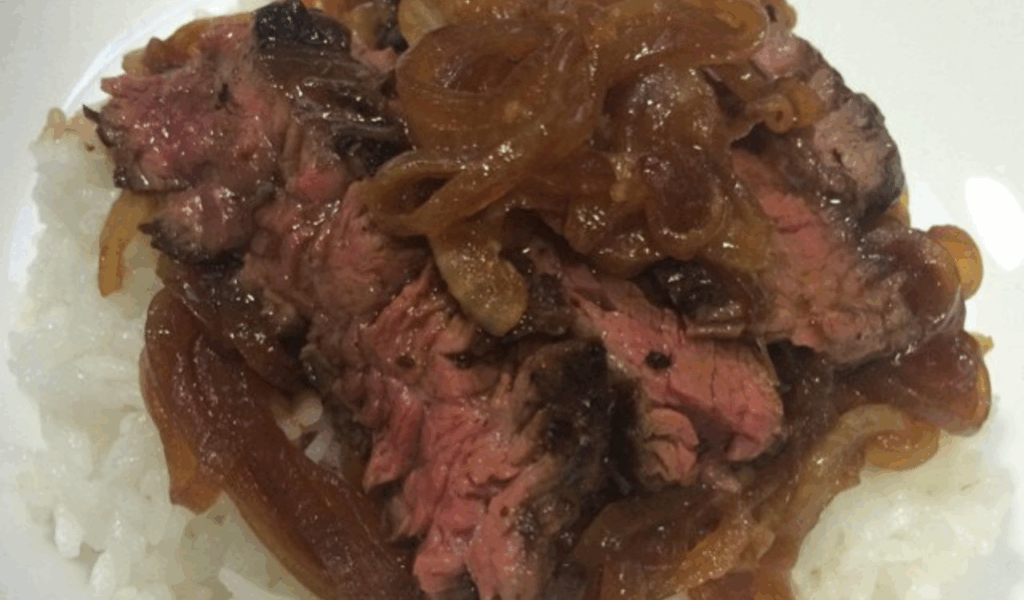
The Filipino version of beef steak and onions is called bistek tagalog. Before being sautéed with onions, thin beef slices are marinated in soy sauce, calamansi (or lemon) juice, garlic, and pepper. A bright yet savory finish is provided by the citrus-soy marinade. It’s easy to use and accommodating to home cooks. It can be found on a number of carefully curated lists of “must-try Filipino foods” for novices.
8. Ginataang Manok (Chicken in Coconut Milk)
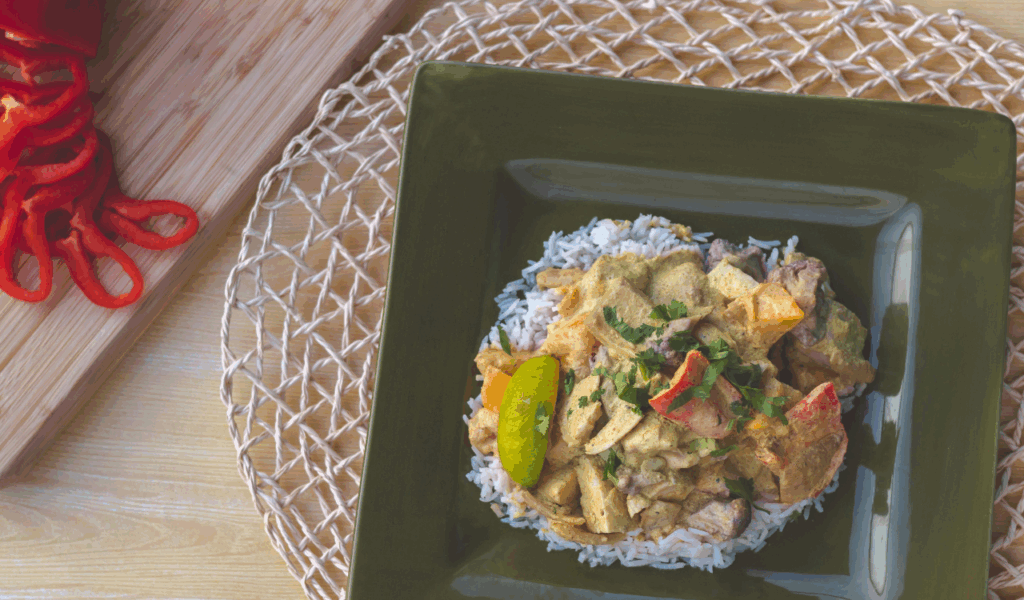
Chicken stewed in coconut milk with chayote or green papaya is known as ginataang manok. Fish sauce or shrimp paste adds depth, while aromatics like garlic, ginger, and onions create the foundation and occasionally provide warmth. Richness without being heavy is provided by the coconut milk. This is a member of the Filipino ginataan family, which includes foods prepared with coconut cream, and is frequently included in Filipino food guides.
9. Binakol (Chicken in Coconut Water)
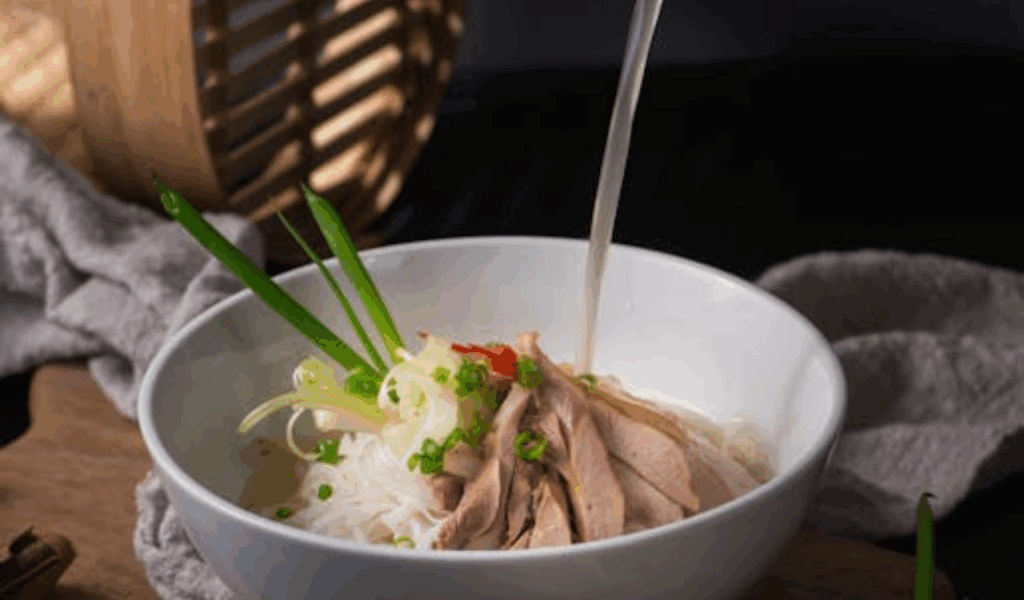
In binakol, chicken is cooked in coconut water (instead of plain water or coconut milk), frequently accompanied by grated coconut, lemongrass, vegetables, and aromatics. It is a lighter cousin of ginataang and tinola dishes. The end effect is hydrating, light, fragrant, and delicately sweet. For home cooks looking for something new, it’s an intriguing choice because it emphasizes tropical flavors and is less well-known overseas.
10. Filipino Spaghetti (Sweet Style)
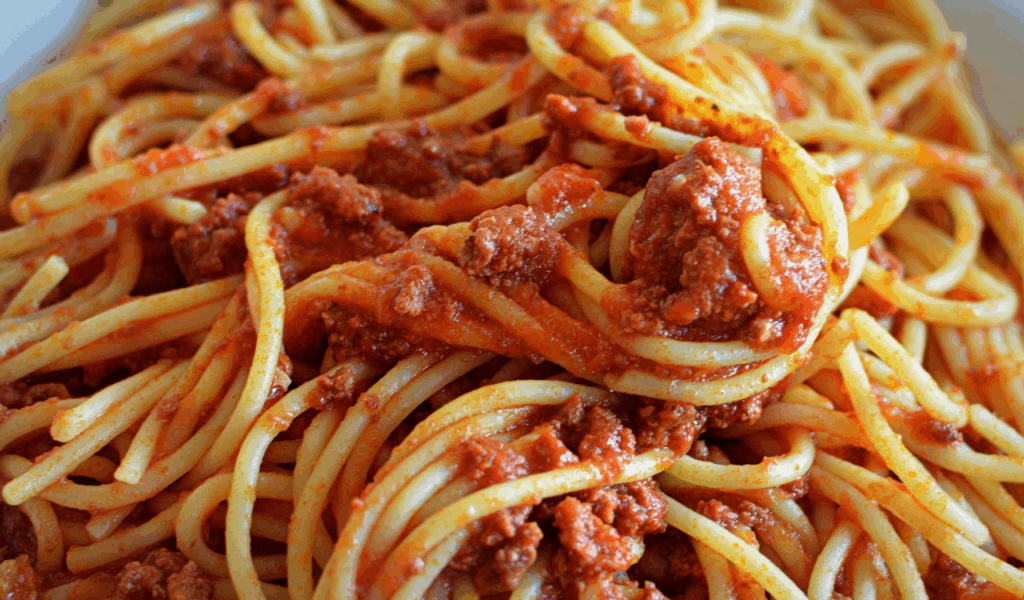
Filipino spaghetti is a distinctively Filipino take on spaghetti, with ingredients like hot dogs or longganisa, ground meat, and grated cheese on top. The sauce is sweetened, usually with banana ketchup, condensed milk, or brown sugar. It’s a comfort food that’s particularly popular at kid-friendly gatherings and birthdays. It differs from Italian versions due to its sweetness, but Filipino-American communities adore it.
11. Bagoong Fried Rice (Shrimp Paste Fried Rice)
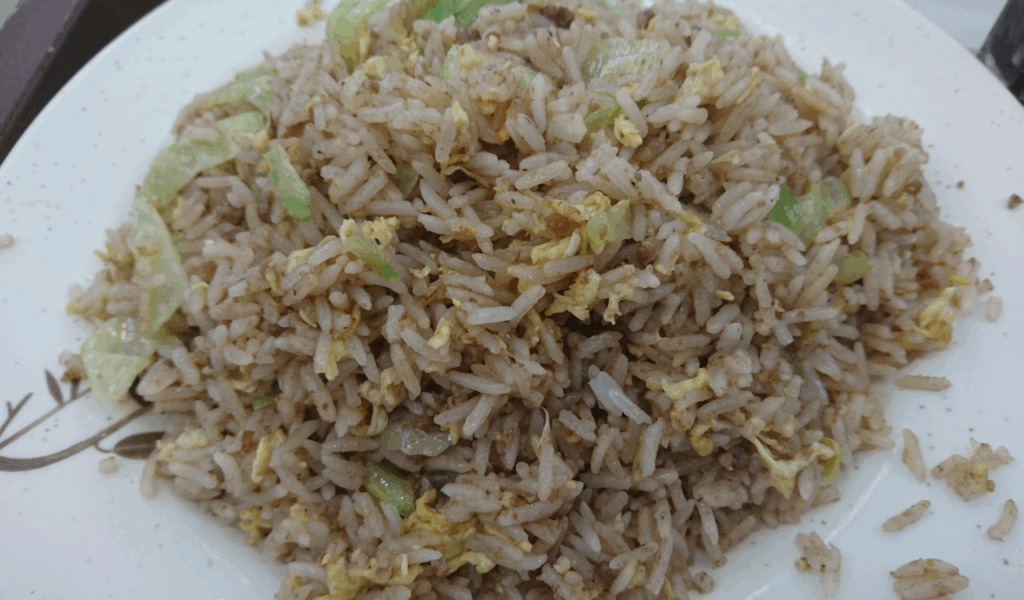
Bagoong alamang, or fermented shrimp paste, is mixed with garlic fried rice, vegetables, mango, and occasionally shrimp or pork to make bagoong fried rice, also called binagoongan rice. It has a hint of brininess, a savory flavor, and a hint of sourness from the green mango. It’s a daring yet approachable dish for fans of strong flavors and umami.
12. Pinapaitan (Bitter Offal Stew)
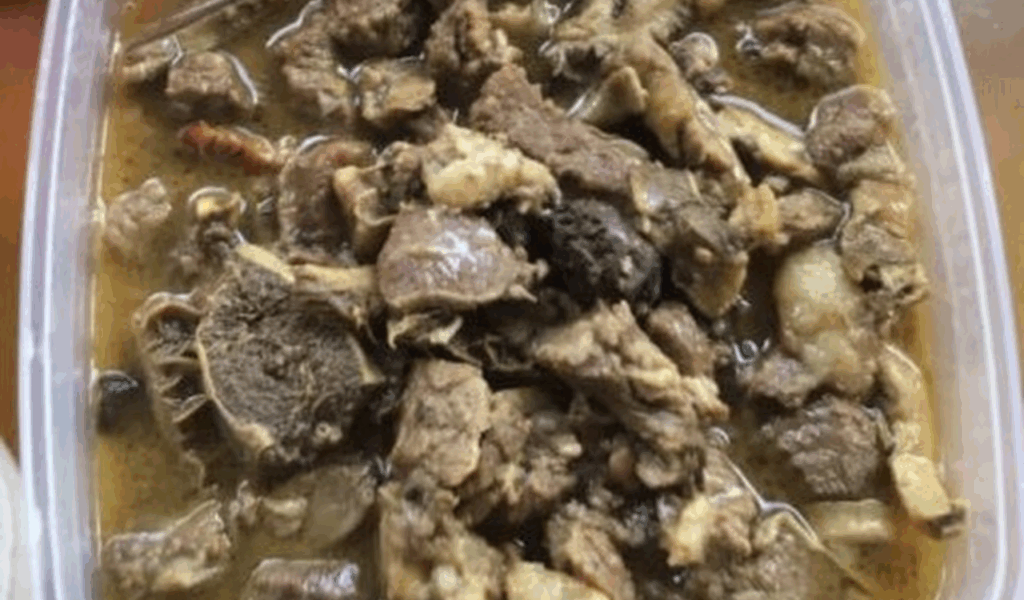
The Ilocano stew known as pinapaitan is made with offal and goat (or beef) meat and is flavored with bile (or cud), which gives it a distinctively bitter flavor. It is frequently served as a filling main course or as pulutan, a snack with beverages. It is prized for its depth, tradition, and character, but its flavor is more daring. This dish exemplifies how Filipino cooking welcomes strong, unusual flavors.
13. Halo‑Halo (Shaved Ice Dessert)
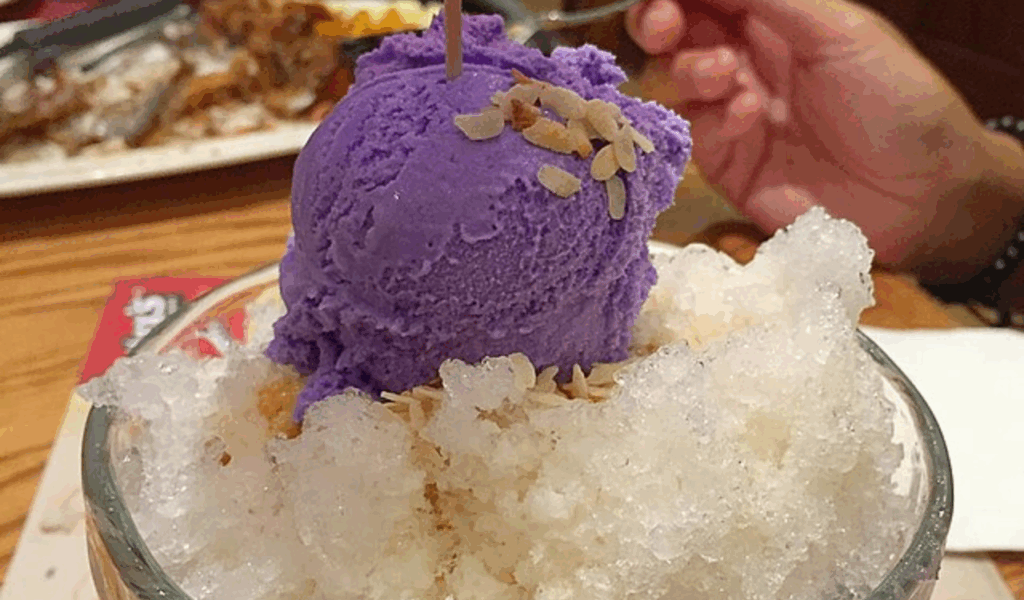
In the well-known Filipino dessert halo-halo, shaved ice is combined with sweetened beans, fruits, jellies, ube jam, leche flan, evaporated milk, and frequently a scoop of ice cream or ube. The word “halo-halo” means “mix mix”; before eating, stir everything together. It’s ideal for hot weather and a lively, enjoyable introduction to Filipino desserts. Halo-halo is a staple dessert in many international Filipino food guides.
